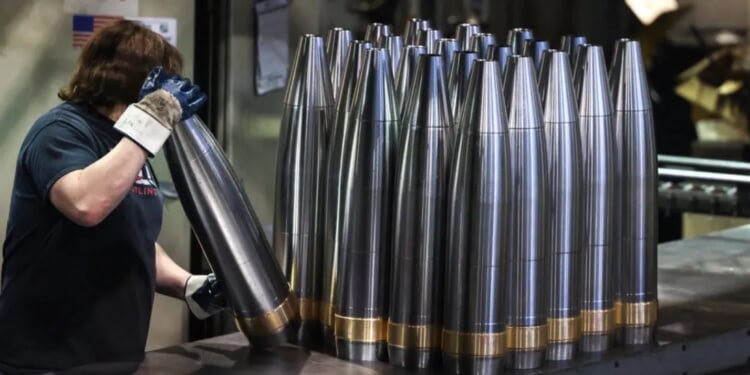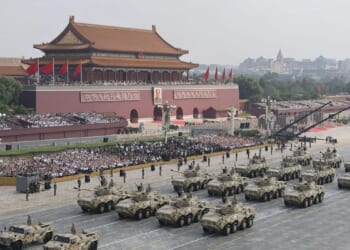America’s weapons stockpiles are running thin as foreign wars stretch production lines and domestic defense workers strike for higher pay.
During an Oct. 17 White House visit, Ukrainian President Volodymyr Zelenskyy urged President Donald Trump to approve Tomahawk missile transfers for use against Russia. Trump refused and said the European Union could help cover the cost, saying his decision was “beyond the money.” (RELATED: Trump Builds Diplomatic Momentum Securing Peace, Trade Deals Ahead Of Looming Meeting With China)
“It’s beyond the money,” Trump said. “You know, we need Tomahawks, we need a lot of other weapons that we’re sending to Ukraine, and one of the reasons we want to get this war over is exactly that,” Trump said. “It’s not easy for us to give; you’re talking about massive numbers of very powerful weapons.”
The Foreign Policy Research Institute (FPRI) says America’s ammunition shortage stems from years of supplying multiple wars at once. In an October report, the group noted that a single Ukrainian artillery battery can burn through more U.S.-made 155mm shells in a day than some American units used during the entire Iraq War.
Even at a current pace of roughly 40,000 shells per month, production lags far behind Ukraine’s needs. The Army now aims to triple output to 100,000 rounds a month by summer 2026, though FPRI warned that Ukraine could exhaust that amount in weeks.
Before Trump’s peace deal in the Middle East, the report added, Iran’s 12 days of missile strikes on Israel forced the U.S. ally to draw down between 15 and 20 percent of Washington’s global stockpile of Terminal High Altitude Area Defense interceptors.
“I have an obligation also, though, to make sure that we’re completely stocked up as a country because you never know what’s going to happen in war and peace, right?” Trump told Zelenskyy and reporters, urging them to focus on ending the conflict rather than extending U.S. weapons transfers.
But according to Politico, the production bottleneck isn’t driven solely by foreign wars — it also reflects a standoff between America’s defense contractors and the unions representing their workers.

MARIETTA, GA – MARCH 8: Randy Brown, a member of the International Association of Machinists Local 709, walks the picket line outside the Lockheed Martin plant March 8, 2005 in Marietta, Georgia. (Photo by Erik S. Lesser/Getty Images)
Nearly 1,000 Lockheed Martin employees who assemble missile components, surveillance systems and other defense hardware walked off the job in May after failing to secure a new labor contract. Workers told Politico they rejected the company’s offer of a 3 to 4 percent raise, demanding double-digit pay hikes to offset inflation.
“We are taking the shareholders’ interest into account and all the things we talked about, which should help improve our margins,” Lockheed’s CEO said, according to Politico. “Even though it may result in some difficult discussions with some of the customer base.”
The unrest extended beyond Lockheed. Politico reported that roughly 3,000 additional defense workers joined the strike, while another 2,500 employees building nuclear submarines came close to walking out before reaching a last-minute deal.
A seven-week walkout involving 33,000 defense workers last fall ended with a new contract guaranteeing a 38% pay raise, the outlet reported.
“Supposedly, by the end of this year I’ll be making close to $23 an hour. So with that, I should be able to afford something and be OK. But we’ll see,” one machinist told the outlet. “Maybe next year.”
The Center for Strategic and International Studies estimated in 2023 that if the war in Ukraine continued into 2025 — and it has — it could take six years to rebuild U.S. ammunition stockpiles to normal peacetime levels, not counting the time needed to prepare for another major conflict.


![Scott Bessent Explains The Big Picture Everyone is Missing During the Shutdown [WATCH]](https://www.right2024.com/wp-content/uploads/2025/11/Scott-Bessent-Explains-The-Big-Picture-Everyone-is-Missing-During-350x250.jpg)














